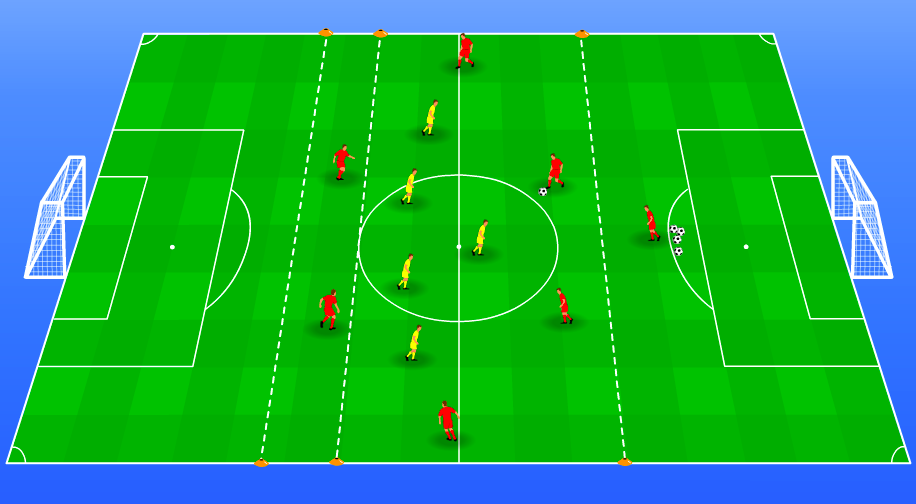How to use and adjust drills from D4F

On this website, and on our Facebook and Twitter page, you’ll find a lot of high-quality football drills. Obviously, they are not all suited for every group of players. Sometimes they need some adjustments to make them useful for a specific team. How can you accommodate these drills to increase the players’ learning effect?
An important note is that in the first place, all videos are meant for inspiration and not for one-on-one copying. A drill in a video is designed for the specific context of that team: their age group, their level, their playing style and their available materials. Those differ for every team. When using a certain training drill, you can ask yourself the following questions.
1. Does this drill fit the playing style of my team?
A team that plays without real wingers and prefers building-up centrally doesn’t really benefit from an attacking drill through the wings. Likewise, a drill that is designed to improve the zonal defending of the players is not very useful for a team using man-marking as their main defensive strategy.
2. Does the drill fit the age of my players?
Some drills are better suited for very young players, others for older players. A rule of thumb could be to focus a bit more on improving decision-making and execution with young players and a bit more on communication (mutual understanding between players) and fitness with older players, without excluding the other two, of course.
3. What time schedule do I use for the drills?
In most cases, there is no time schedule included in the description. The reason is that it depends heavily on the specific team executing the drill. It also depends on the situation within a team. For example, less repetitions are recommended two days after a match.
4. Where do I zoom in on from a tactical point of view?
Most of the drills could be useful for multiple objectives, in attacking, defending and both transitioning moments. However, it can be very useful to zoom in on a specific aspect within your playing style to pay more attention to detail. This could be body positioning of midfield players, man-marking in the box or the intensity in 1v1 pressing.
5. How do I increase the transfer from a drill to a game situation?
In almost every drill, the match situation (11v11) is simplified in terms of the number of players and pitch size. However, the objective always remains to improve players in 11v11. It helps to constantly link the situation in the drill to comparable situations in the match. This creates a better transfer to the football actions of your players in matches.
Specific example
Let's discuss a specific example of how to adapt a drill: the central build-up exercise from Pep Guardiola at Bayern München you'll find below. He plays 5v5 in the middle zone, with the option of passing back to the sixth red player behind (imitating a goalkeeper). The objective is to find the attacking midfielders behind the midfield four of the opponent.
Assume you want to use this drill. Some relevant questions are:
- Does your team play with four at the back or with three or five?
- Does your team play with two attacking midfielders or with one or three?
- Do you expect the next opponent to play with a flat midfielder four?
- Does the level of your players require bigger distances in the length?
- Does the level of your players require less yellow or more red players?
- Do you have 11 field players available for the session or more/less?
Let's assume you coach a U19 team from a national level and you'll have 15 field players and 2 goalkeepers available for tonight's session. You always use the formation 1-3-3-3-1 and you want to improve finding the three central offensive midfielders between the lines. Your next opponent will most likely defend in a flat 1-4-4-2. In that case, you could adapt the drill as shown below.

The three red central defenders and one holding midfielder build-up in a 4v2 against two yellow forwards. They can pass back to the goalkeeper only once. They try to find the three red offensive midfielders between the lines. The yellow midfield four will stay in their own section and try to block passing lanes. When red succeeds, the three offensive midfielders turn and attack in a 3v2 + GK towards the opponents goal. All the yellow players are allowed to track back.
Trial and error
This is just one example of adapting a drill you'll find on this website or our social media to match the demands of your own team. This can be down with almost any drill, for almost every team. Just be creative and learn by trial and error!
